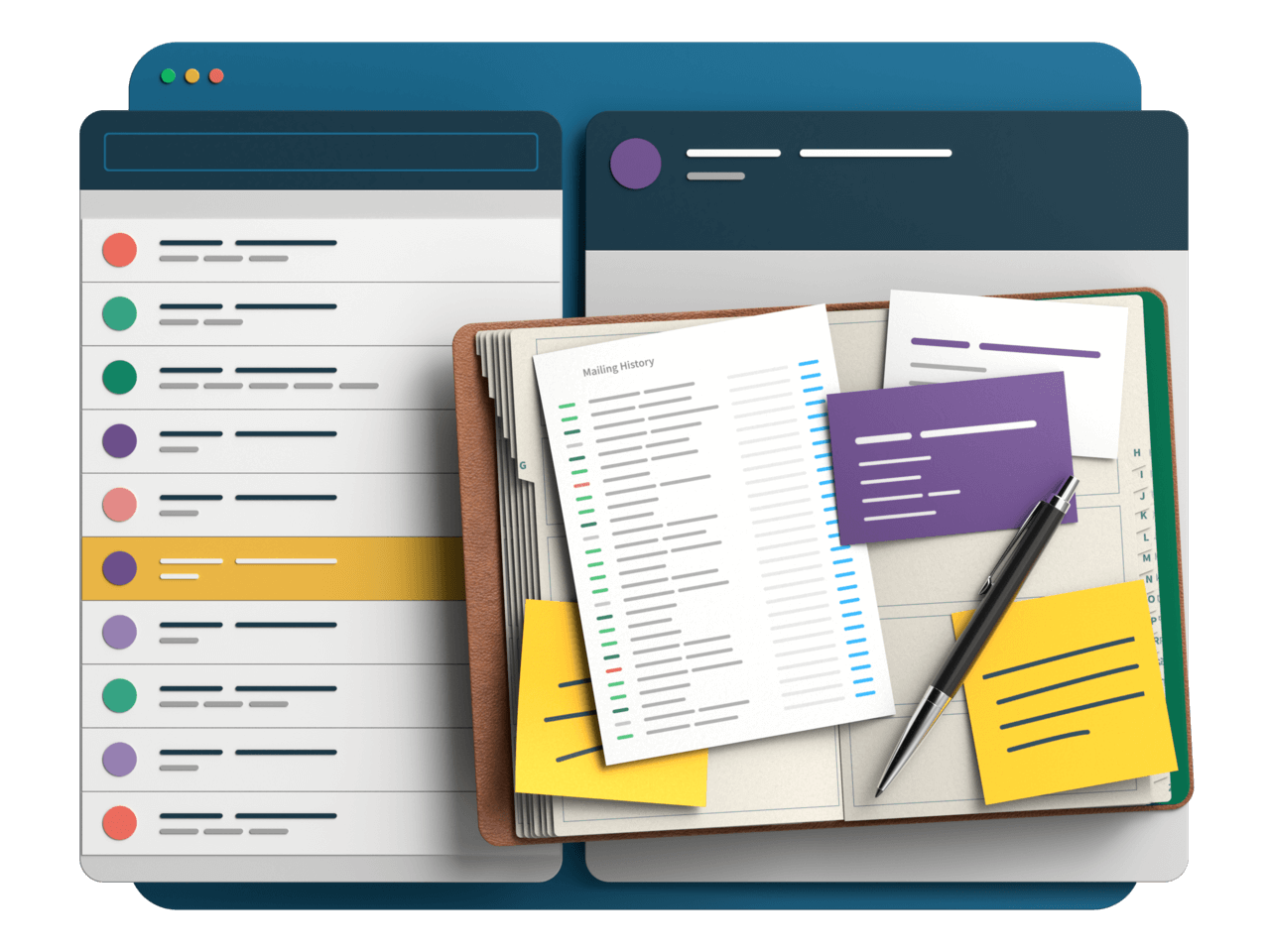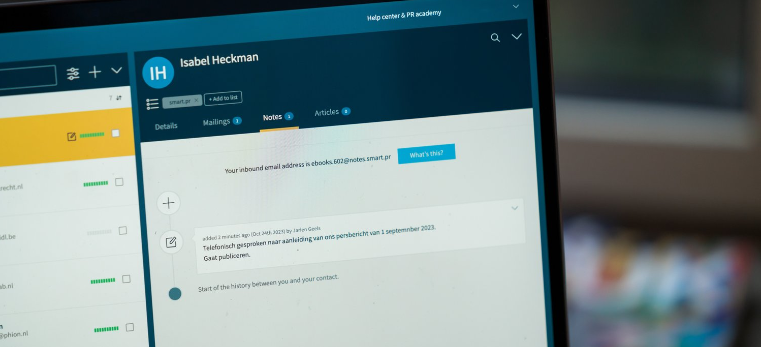How to put together a good press list?
A press list, media list, or distribution list is a list of journalists, bloggers, influencers, and stakeholders whom you want to approach with your press release. Compiling such a list requires research. In this article, we provide you with the most important tips for creating a good press list.
TIPS FOR CREATING YOUR PRESS LIST:
Conduct preliminary research
Create personas
Distinguish between different types of media
Tailor your recipient lists for each release
Don't think you can quickly and cheaply acquire a list
Avoid spamming
Keep track of your contacts
Use a PR tool
Bonus: The benefits of a PR tool with CRM and database
Before you can send out your message, you need to consider which journalists, editorial teams, and platforms you want to approach with your news. You could also decide not to think about this and send it blindly, but that has little to do with public relations; it's simply spamming. We'll explain how to do it right.
1.CONDUCT RESEARCH
Compiling a press list begins with thorough research: Which journalist, blogger, or influencer is covering your topic? And more importantly: What exactly do these journalists write or create? Our main advice: make time for this research. The quality of your preliminary research is a significant predictor of the success of your PR campaign.
Read several articles from each journalist on your list, watch the programs they produce, or listen to a few episodes of their podcast. This way, you'll know if your news could be relevant to them and what tone of voice is best to approach them. To help you with your research, we have developed our News Search Engine. With this tool, we can show you the most recent publications by journalists. This allows you to quickly spot the tone and writing style of the journalist, what they publish, and from which angle. Often, this helps you deduce how to best approach this journalist with your news.
2.CREATE PERSONAS
Creating a few personas can help you get a better understanding of your target audiences and therefore also of which journalists you should approach to reach these target audiences.
Personas are fictional characters with the characteristics of your ideal customer or target audience. You can make these characteristics as detailed as you want and even give your personas a name. Specifically for PR professionals, it can be useful to create personas of both the end users of your product or service and the associated journalists. We have written a comprehensive guide on creating personas for your PR.
3.DISTINGUISH DIFFERENT TYPES OF MEDIA
Another important part of creating a good press list is distinguishing between different types of media. In certain cases, it may be that a journalist working for a newspaper or trade magazine needs a different type of press release than a vlogger or podcast host.
In the Smart.pr database, you can easily distinguish based on subject and media type. This way, you can compile a list of media that fit your press release.
Media suitable for extensive texts, such as newspapers and magazines, can be provided with a roll-up press release. You can create a roll-up press release by placing the most important information at the beginning of your message, so the journalist can almost directly incorporate it.
An influencer on social media will benefit more from visual material or free samples, rather than a long piece of text. It's good to take this into account when creating your press lists.
4.TAILOR YOUR RECIPIENT LIST
It often happens that someone creates a press list and then uses it for all future press releases. However, this strategy can be refined. We advise you to thoroughly review your recipient list before sending out your message. This way, you can remove contacts from the recipient list that broadly fit the topic but for whom this specific message isn't that relevant. Smart.pr offers you the option to easily adjust the list or lists you've taken as a 'basis' for specific messages in the recipients menu.
Managing your press lists can of course be done in Excel, but a good PR tool with a CRM (address book) has many advantages, which will be discussed later in this article.
5.DON’T THINK YOU CAN QUICKLY AND CHEAPLY ACQUIRE A LIST
Many people start by asking around if there are people in their network who have press lists. We don't consider this the optimal strategy, as you often get severely outdated data. Data on where, for whom, and on which topics journalists work becomes outdated much faster than you think. Sending irrelevant messages is very annoying for journalists and also harmful to your reputation, so be careful with that!
Many journalists post the contact information where they want to be approached with news online. If they don't, there's usually a reason for that. Not all journalists are interested in press releases. So, a good first step is always to look up the contact details of the people on your press list yourself. Look in colophons, on websites of the media where they work, and/or on their social media channels. This is the method our data team uses to keep the Smart.pr journalist database up-to-date.
6.AVOID SPAMMING
Often, people who send out a press release for the first time think: the longer the list of recipients, the greater the chance of success. This is blatantly untrue. We can't repeat it often enough, but this approach is bad for your reputation and annoying for journalists.
The success of your press release depends on how well you target: how well you do your research. A second important success factor is if the recipient already knows you. This is of course difficult when you're just starting out, but this is why we firmly say that PR is a long-term investment. If you do it right and send relevant messages to people who can benefit from them, you may not have immediate success, but next time you'll definitely have a better chance of being taken seriously and getting a publication.
7.KEEP TRACK OF YOUR CONTACTS
If you're systematically doing PR, chances are you'll have been in contact multiple times with the same journalists. You could try to remember all of this yourself, and to some extent, this is certainly possible. But logging with which journalists you've had contact, and what this contact was about, through a system is often much easier, more efficient, and more scalable.
This is especially true when you work in a team. Logging contact with journalists is essential to prevent things from falling through the cracks, or to prevent double contact with journalists. So, think carefully about to what extent you can manually keep track of this, or when you should consider using a PR CRM.
With the notes function in Smart.pr, you can add notes and previous email contacts to your press contacts. Want to know more? Request a free Smart.pr demo!
8.USE A TOOL
We of course advise you to purchase a tool with a journalist database and CRM. As mentioned, the professional data of journalists becomes outdated quickly - and this process is getting faster and faster - so you preferably want a dataset that is lovingly and attentively maintained by experts.
For your first message, you can of course try to build a press list in Excel yourself. However, public relations is a long-term investment, so if you take it seriously, you can ensure that the effort you put into your first message carries on in your subsequent messages and that your press lists remain up-to-date. A good PR tool like Smart.pr, which keeps your contact information up-to-date for you, helps with this.
THE MAIN BENEFITS OF A CRM AND JOURNALIST DATABASE IN A GOOD PR TOOL ARE:
You have a central place to work together - you build a network together. It often happens that different versions of the same Excel file circulate. With a good tool, you can prevent this.
After sending out your press release, the sending details and results are automatically tracked: you can see everything you've ever sent to each person, what they've opened, and which links and attachments they've clicked.
An address book focused entirely on the PR task, like that of Smart.pr, automatically shows the articles about the journalists in your address book. Save a name in Smart.pr, and all the articles that are available online by this person will automatically appear. This gives you a clear picture of what the journalist writes about and which tone of voice is appropriate in your press approach.
You can easily make and share notes. For example, let your colleagues know if a journalist prefers to be called or messaged, and preferably before 12:00 p:m, because after that, this person is writing.



